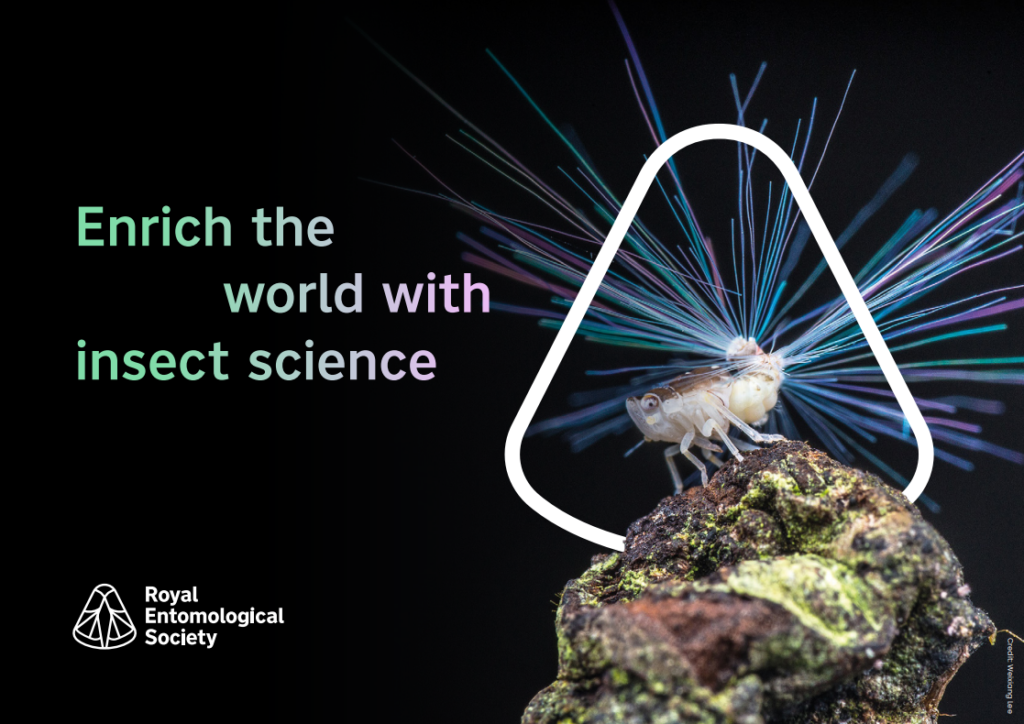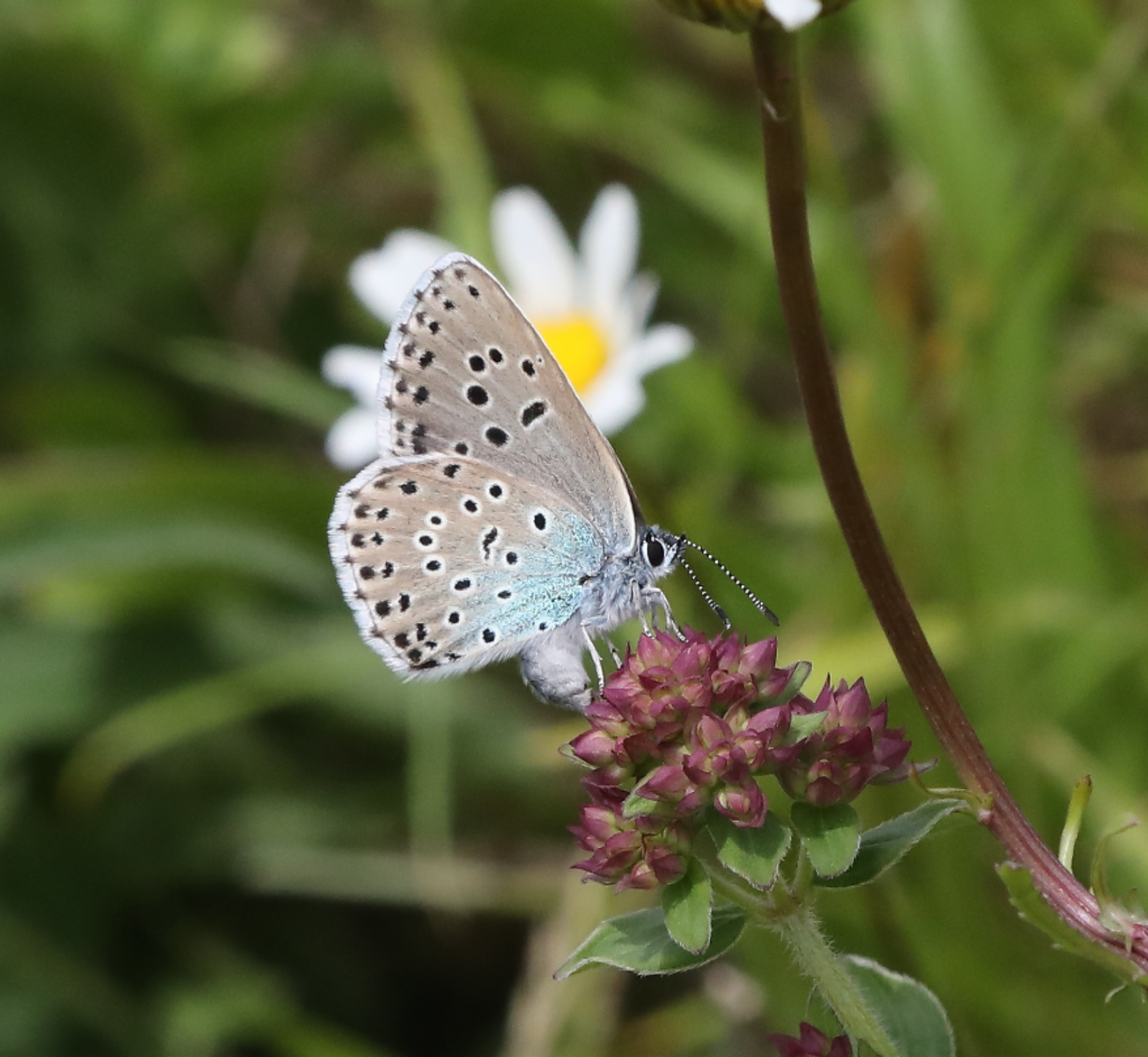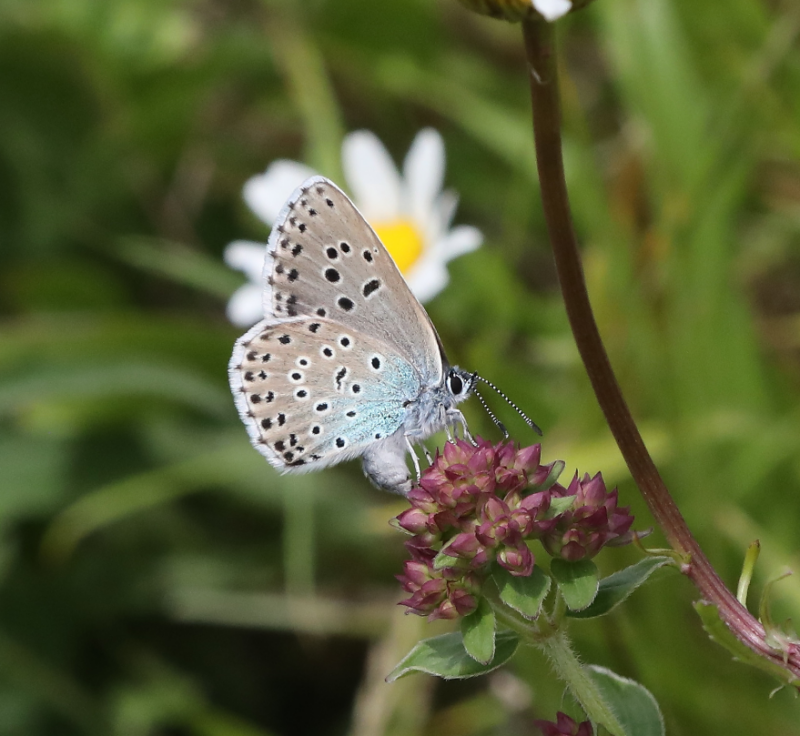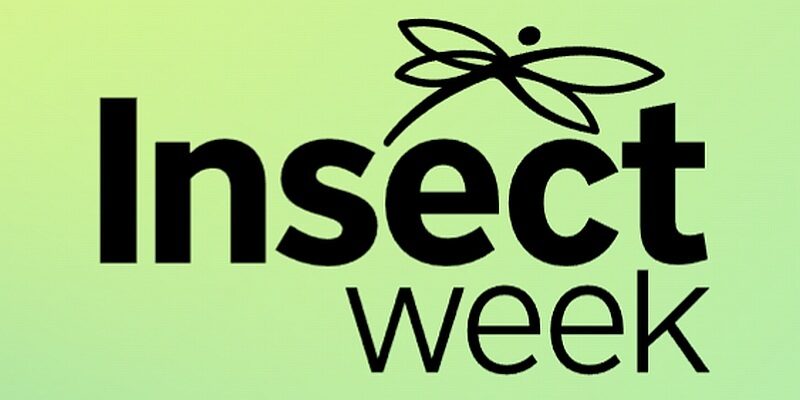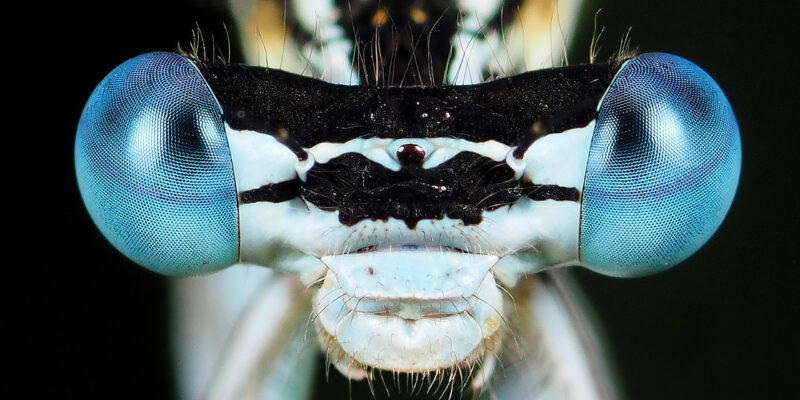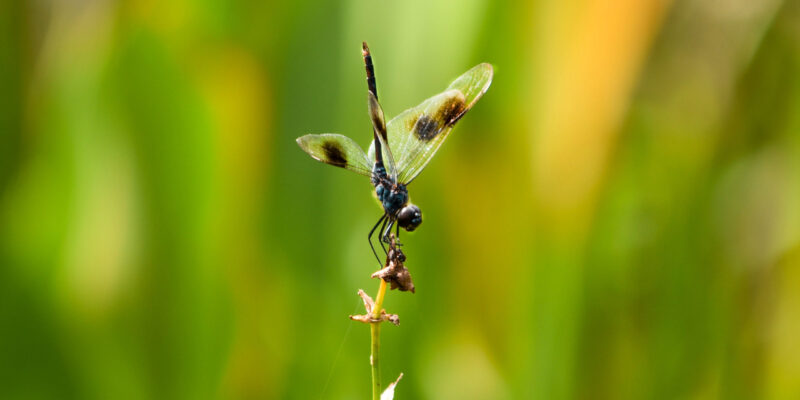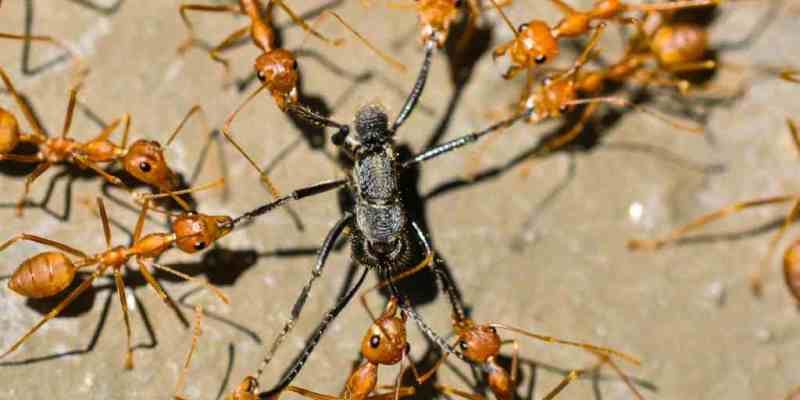Biodiversity Biological control Biological recording & species identification Conservation Ecology Lepidoptera

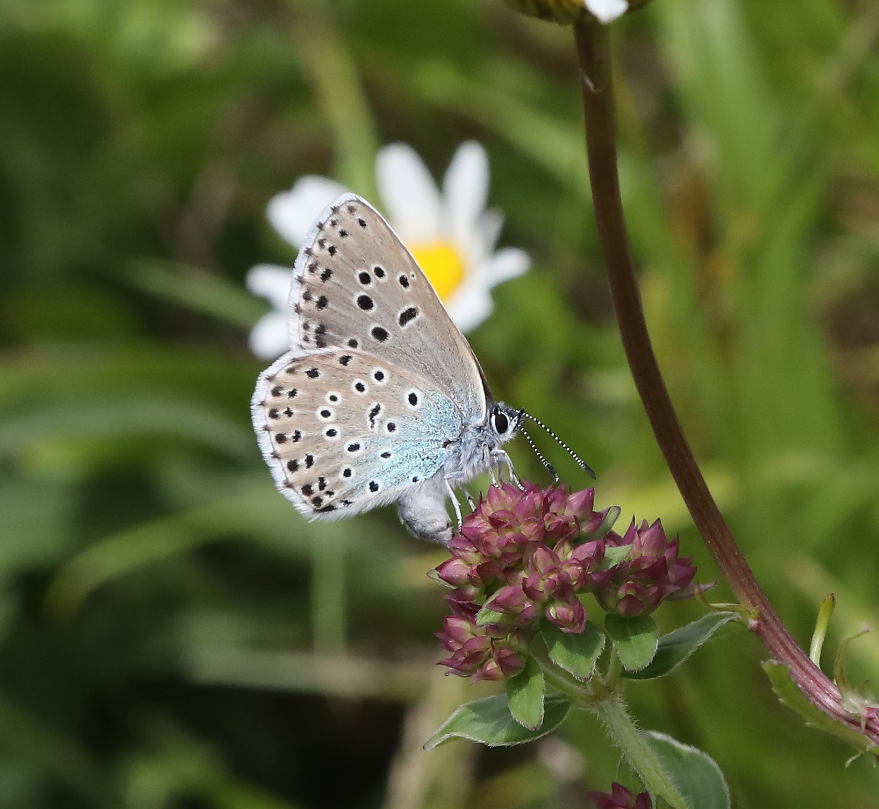
Read the full Press Release here:
The once-extinct Large blue butterfly, reintroduced to the UK in 1983, flew in its greatest numbers since records began on the largest number of sites in 2022. Thanks to meticulous conservation management by a partnership of scientists and conservation bodies, southwest England now supports the greatest concentration of Large blues known in the world.
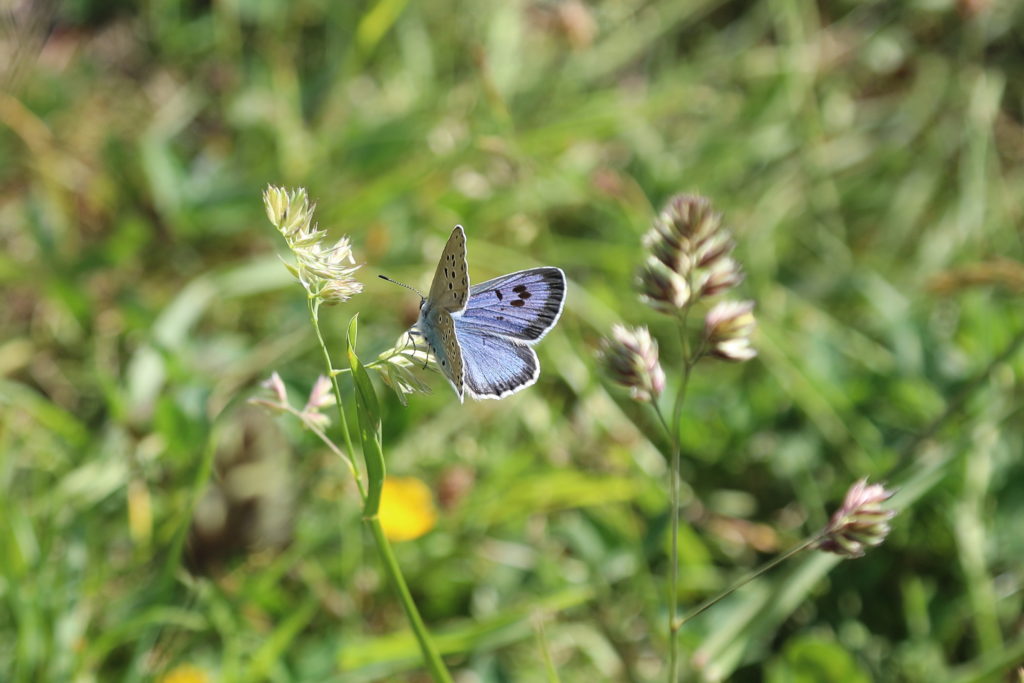
Twelve new sites are being restored to flower-rich meadows suitable for Large blue breeding, either ‘starting from scratch’ on arable land, failed conifer plantations and railway constructions, or by restoring bespoke grazing to degraded downland. Already, these support up to a third of the UK population of Large blues, up from just 7% in 2019.
These restorations of a disappearing type of wild meadowland have also provided ideal breeding grounds for numerous other rarities that share the Large blue’s habitat.
A remarkable number of other insects have increased on or newly colonised the twelve restorations. Nationally threatened species include the Shrill carder bee (UK’s second most endangered bumblebee), Rock-rose pot beetle (known from just five UK sites), the Downland villa beefly (not recorded in UK for 50 years prior to 2000), and the weird Rugged oil beetle (only found on around 30 UK sites). Eight Red Data-listed butterflies – Duke of
Burgundy, Small blue, Adonis blue, Brown hairstreak, White-letter hairstreak, Small heath, Grizzled skipper, Dingy skipper – are also thriving alongside abundant displays of more common or local insects and plants.
These restorations represent the largest and most innovative next phase of the reestablishment of the Large blue in Britain. Aside from the gains of other rare species, they are important internationally because the Large blue is listed as one of Europe’s most ‘Endangered Species’ of insect, and similarly worldwide. The twelve sites link or extend more-established populations spanning two landscapes in mid Somerset and, more recently, in the Cotswold Hills of Gloucestershire where a most promising toehold is now established. The new restoration sites are managed, owned or administered by six partner organisations – National Trust, Somerset and Gloucestershire Wildlife Trusts, J & F Clark Trust, Natural England, and Oxford University. The restorations are led, supervised and monitored by the Royal Entomological Society’s David Simcox and Sarah Meredith, who also designed the bespoke management plan needed for each site. Generous funding by the Prince of Wales’s Charitable Fund made this possible in 2019-22, including the successful physical reintroduction of Large blues to two sites in the Cotswolds (after 150 years’ absence) and of the Duke of Burgundy to Somerset. Other colonisations occurred by natural spread, as the new restorations link up with previous ones to form interconnected populations across two landscapes.
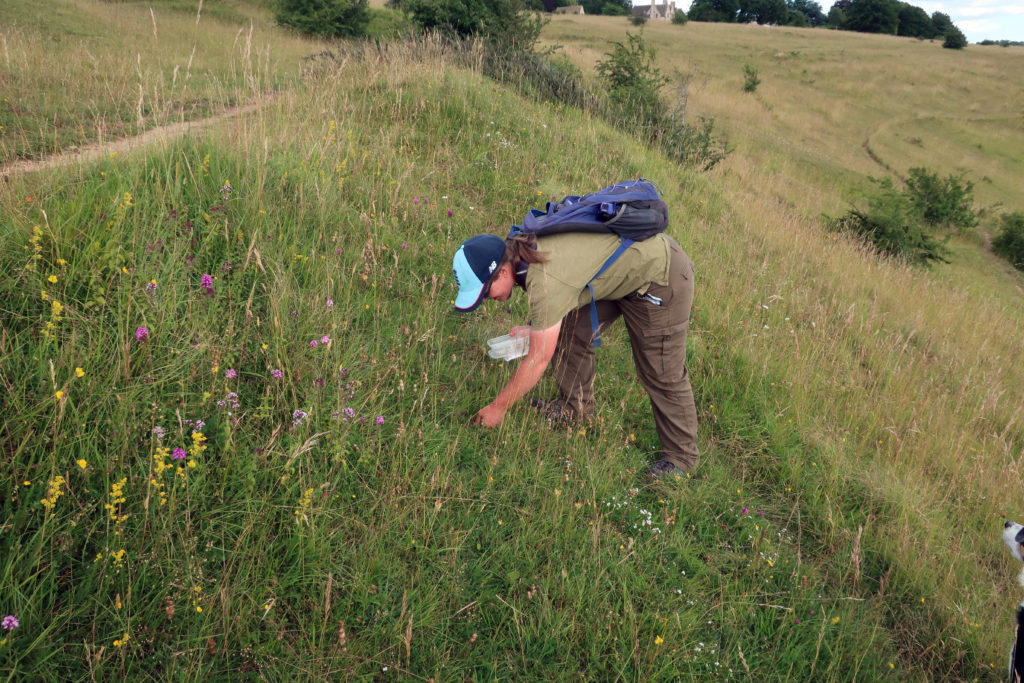
Sarah Meredith releasing Large Blue caterpillars Rodborough Common
After this promising start, the next phase of restoration – research and development to extend the Large blue and associated wildlife across three landscapes in its former stronghold of the Cotswold Hills and gain a greater understanding of the threats posed by climate change – will again be led by the Royal Entomological Society and funded by Natural England’s Species Recovery Programme.
Read more about RES conservation projects and our nature reserve, jointly owned with the Gloucestershire Wildlife Trust.
Also read The Guardian’s article on Large blue butterfly numbers soaring in Britain

